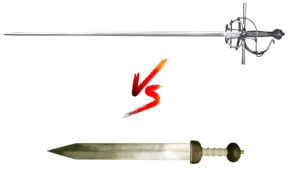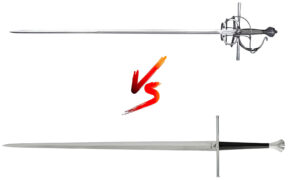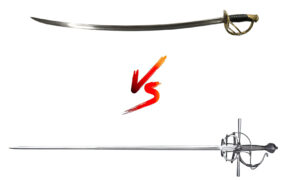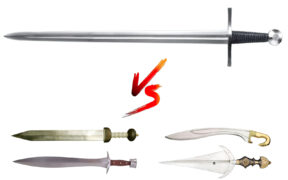Rapiers and Their Hilt Styles Through History
NO AI USED This Article has been written and edited by our team with no help of the AI
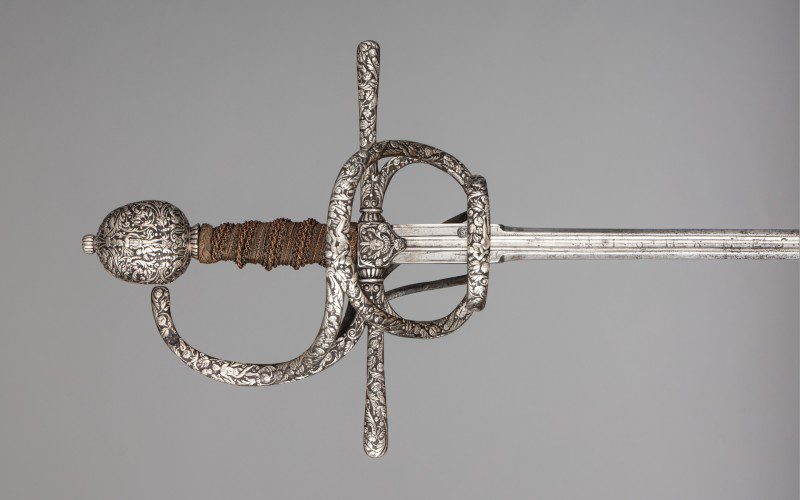
The rapier, a thrusting sword with a long blade, was the weapon of choice for duelists throughout Europe from the 16th to the 17th century. It became a status symbol for swordsmen, signifying both their social standing and skill in swordsmanship. The rapier is famously linked with courtly life, dueling, and fashion, which is reflected in its delicate and intricate hilt designs.
Let’s define the rapier as it was, classify the various types of hilts fitted to rapiers, and examine how each served a practical purpose.
What Exactly Is a Rapier?
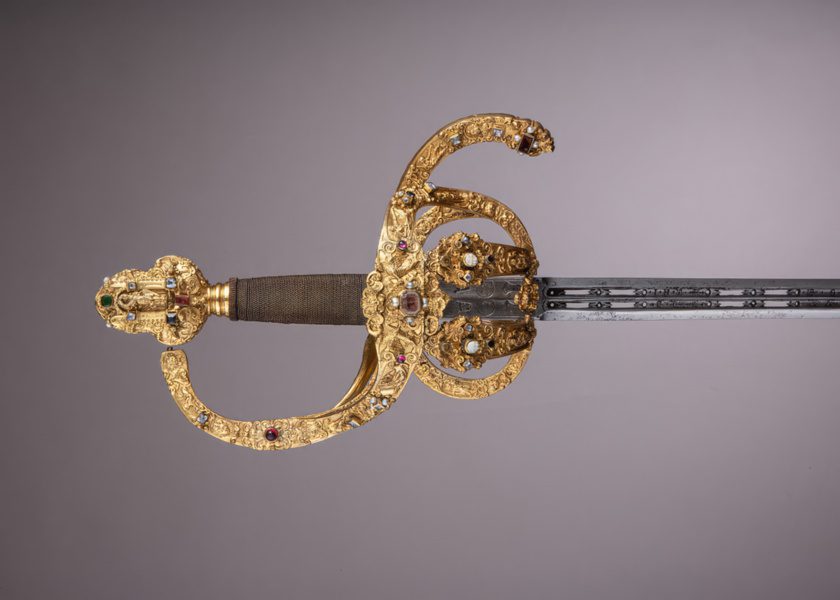
The term rapier comes from the Spanish espada ropera, which translates to sword of the robes, indicating its significance as the weapon of a gentleman. The rapier emerged during a time when swords were important items of civilian dress, serving both as symbols of social status and as weapons for self-defense in an era marked by dueling and frequent robberies.
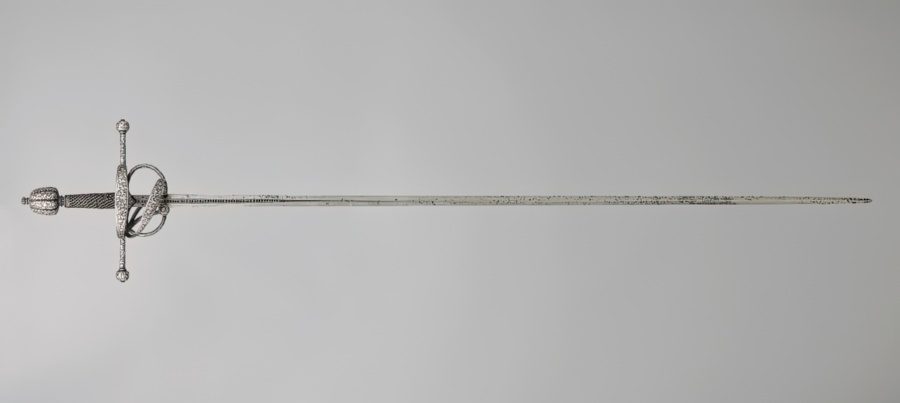
A rapier, designed purely as a thrusting weapon, features a long, narrow, rigid, and nearly edgeless blade with a sharp point. While rapiers vary in shape, length, width, and hilt style, they are generally thin, lightweight, fast, and well-balanced, optimized for one-on-one combat against unarmored opponents. It was primarily a civilian weapon, unsuitable for military use or battlefield combat.
Exploring the Hilt Styles Used in Rapiers
The rapier is primarily distinguished by its blade form, not its hilt style. However, modern collectors often describe rapiers by their elaborate hilts, which include various combinations of loops, shells, cups, and baskets that provide added hand protection.
Here are some notable hilt styles found on rapiers:
1. Swept-Hilt Rapier
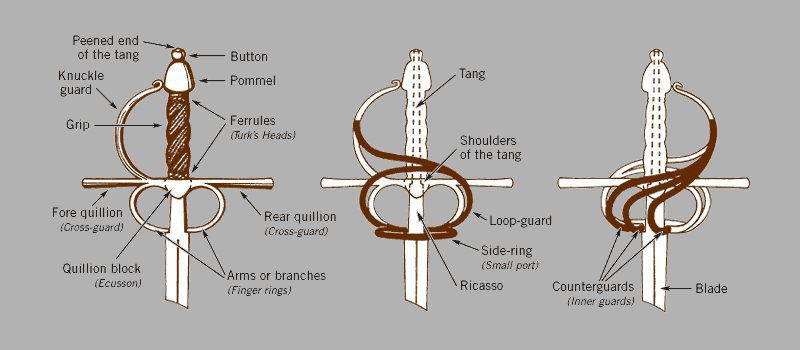
The term swept hilt derives from its design, characterized by the graceful, sweeping lines of its guards that curve elegantly from the ricasso to the pommel. Despite its seemingly minimal protection, this hilt design continued to be popular on rapiers into the early 17th century, primarily because of its refined and stylish appearance.
Sword connoisseurs might further classify the swept-hilt design into categories such as quarter-hilt, half-hilt, three-quarter hilt, full-hilt, and beyond.
Quarter Hilt
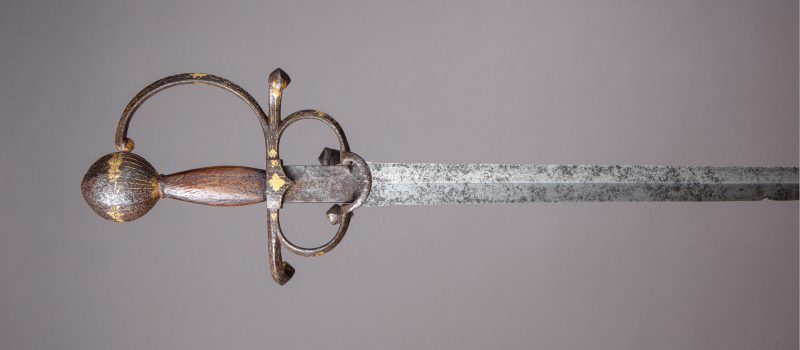
In a basic hilt, the sword features a crossguard and finger rings—sometimes called arms or branches—on the ricasso. When it comes to a quarter hilt, the rapier has a lower side-ring on the ricasso, joining the finger rings across the outside of the blade.
Half Hilt
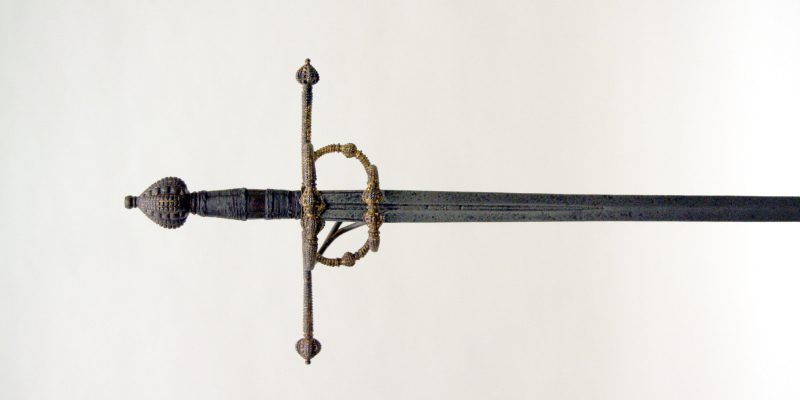
Like the quarter hilt, the half hilt has the traditional cross, sometimes sweeping quillons or crossguard arms. It also has finger rings and a lower side ring joining them, but the side ring on the crossguard makes it a half hilt. So, it has two side rings—an upper ring on the crossguard and a lower side ring on the ricasso.
Three-Quarter Hilt
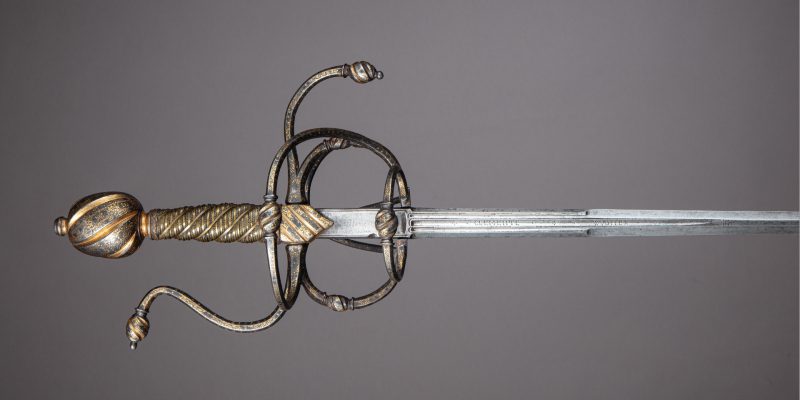
A three-quarter hilt has two—or three side-rings—but one of its quillons sweeps upward and becomes longer to form a knuckle guard. As the name implies, the knuckle guard is an extension of a sword’s guard, curving over the length of the grip, protecting the warrior’s knuckles.
Full Hilt
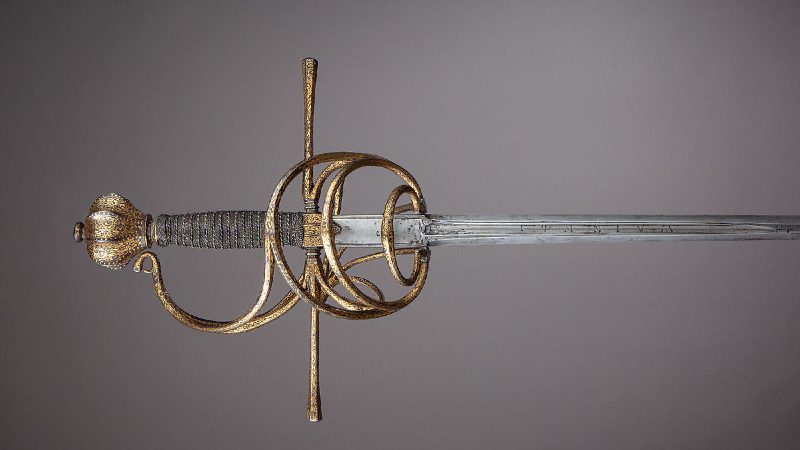
A full hilt has a separate crossguard and a knuckle guard, including finger rings and multiple side rings. It is the most elaborate swept-hilt design, in which the bars sweep upward in a curve from the ricasso to the pommel.
Shell Guards
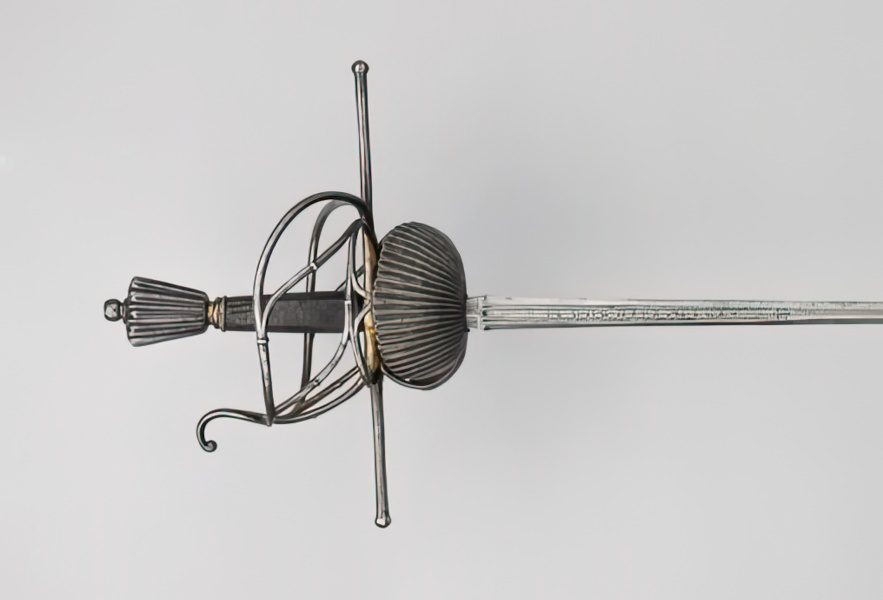
Shell guards are among the elements that make the swept-hilt distinctive. In discussing various types of hilts, historian Vesey Norman observed that the shells were fluted and had a true cockleshell shape. The pair of shells is often symmetrical and placed within the rings of full-hilts.
2. Pappenheimer-Hilt Rapier
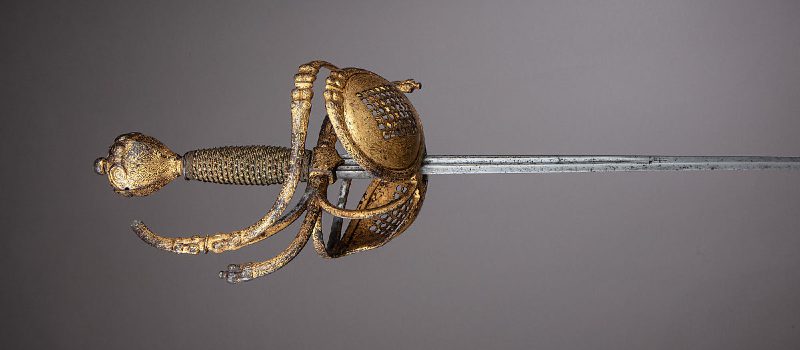
The Pappenheimer hilt derived its name from Gottfried Heinrich, Count zu Pappenheim, a German commander during the Thirty Years’ War. It features two pierced shell guards that offer additional protection for swordsmen. Some designs have three rings and shell hilt, while others are simpler, featuring just one large ring with a shell. In some variations, the back shell is smaller than the front one.
The appearance of the Pappenheimer hilt in various Dutch paintings and artworks suggests that its design likely originated in the Netherlands. The reason for its association with the German leader remains unclear, though it developed during his era.
3. Loop-Hilt Rapier
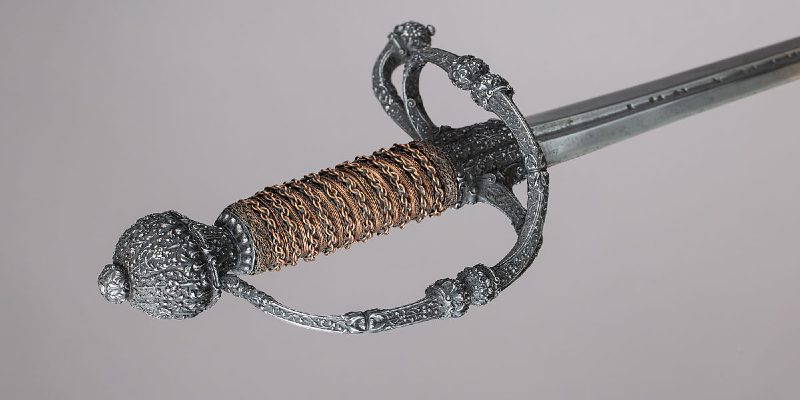
A loop hilt is a type of hilt where the guards are reduced to the absolute minimum, consisting of a knuckle guard, rear and forward quillons, and a loop guard. The loop guard runs from the bottom curve of a knuckle guard to the inner part of the rear quillon. Some elaborate designs include a small shell under the loop guard.
4. English-Hilt Rapier
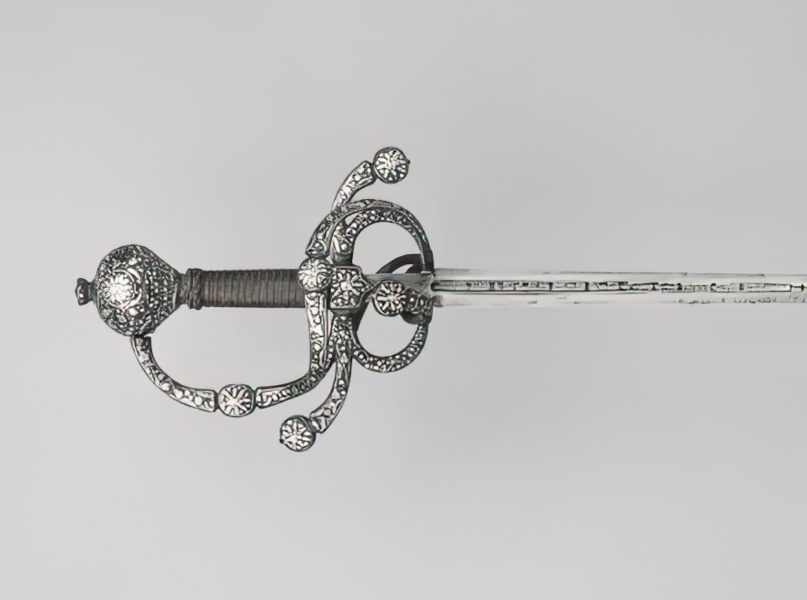
There are several types of English hilts, most of which feature a large spherical or apple-shaped pommel, characteristic of English design. The English-hilt rapier is noted for its thick, heavy guards with short, bulbous quillons. These hilts are typically adorned with a distinctive style, including rich silver inlay, which was particularly popular in England.
5. Dish-Hilt Rapier or Flamberge
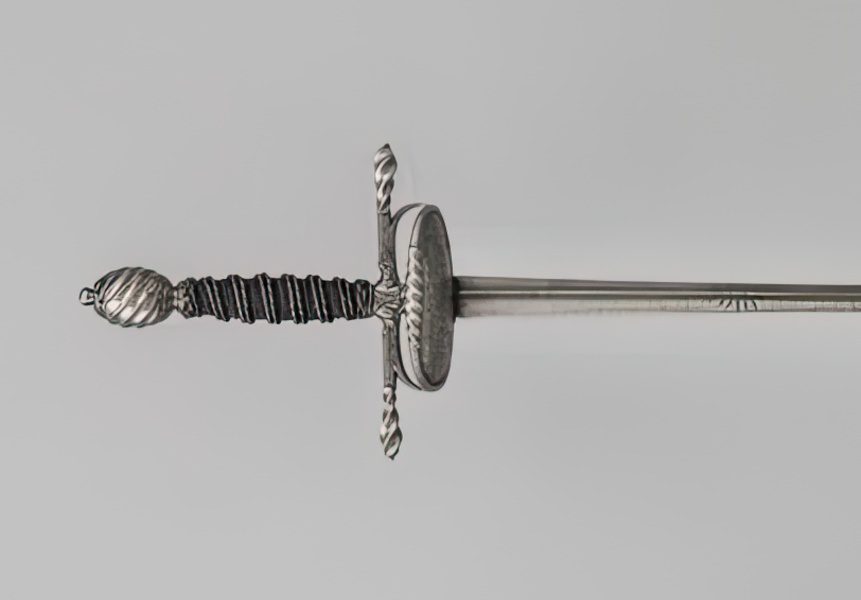
The dish-hilt rapier is defined by its simplified hilt design, which includes a tall, oval pommel, short straight quillons, and lacks arms or additional guards. Hand protection is provided by a large, dish-shaped plate or two flat, oval shells positioned directly below the quillons. These characteristics indicate that dish-hilt rapiers were transitional predecessors to the smallsword.
The dish-hilt rapier has also been called the flamberge, given by Egerton Castle, an early practitioner of historical fencing. However, the term was inappropriately applied. In the late 19th century, there was no term that could describe the hilt type, so he used flamberge to set it apart from other rapiers. He probably got it from the expression mettre flamberge au vent, meaning to draw one’s sword.
6. Cavalier-Hilt Rapier
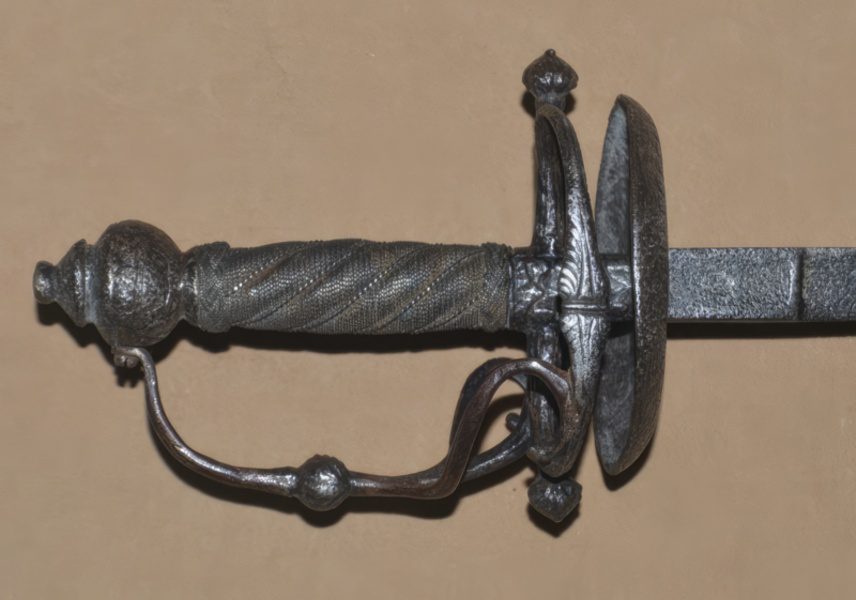
The Cavalier hilt, a type popular during Charles I’s reign before the Civil War in 1641, featured various forms. It was distinguished by a dish, a ring, quillons, a knuckle-guard, a pommel, and a grip. Some Cavalier hilts, like dish-hilt rapiers, had two flat oval shells instead of a dish-shaped guard. Both the Cavalier hilt and dish-hilt rapiers were transitional forms before the true smallsword developed.
7. Cup-Hilt Rapier
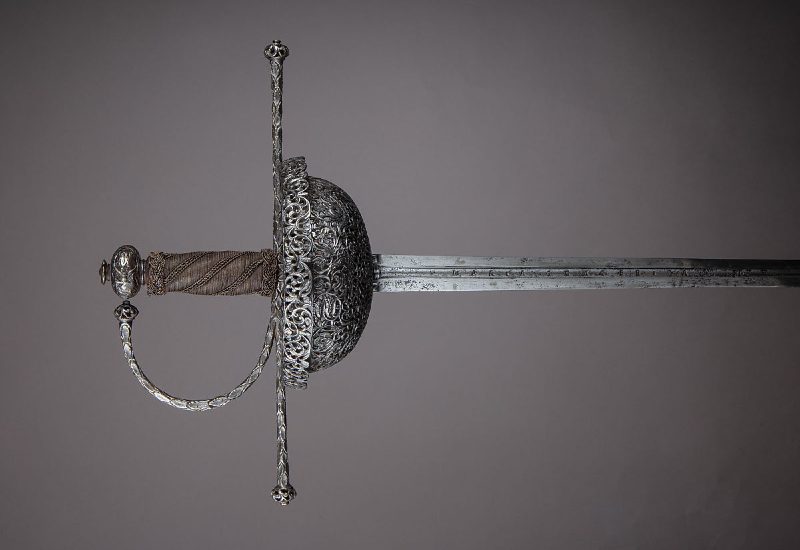
In Spain and the Spanish-influenced regions of Italy, the rapier guard developed into a fully enclosed design called the cup-hilt. This type of hilt is characterized by its wide, cup-shaped guard, extended quillons, and semi-circular knuckle-guards. Some variations also include a feature known as romepuntus, a turned-over rim on the cup designed to catch the point of an opponent’s blade.
Spanish hilts had limited design variation but were renowned for their intricate steelwork. The more refined examples had cup guards or pommels elaborately chiseled with decorative motifs such as flowers, leaves, and masks. In some cases, both Spanish and Italian cup hilts featured scalloped edges along their upper rims.
The cup-hilt rapier reached the peak of its popularity between the early 1650s and the first decade of the 18th century in Spain and southern Italy. While it was an effective weapon, offering excellent hand protection due to its guard, it was cumbersome to wear. As fashion increasingly emphasized elegance in attire, the rapier became less favored in more sophisticated circles.
8. Bilbo-Hilt Rapier
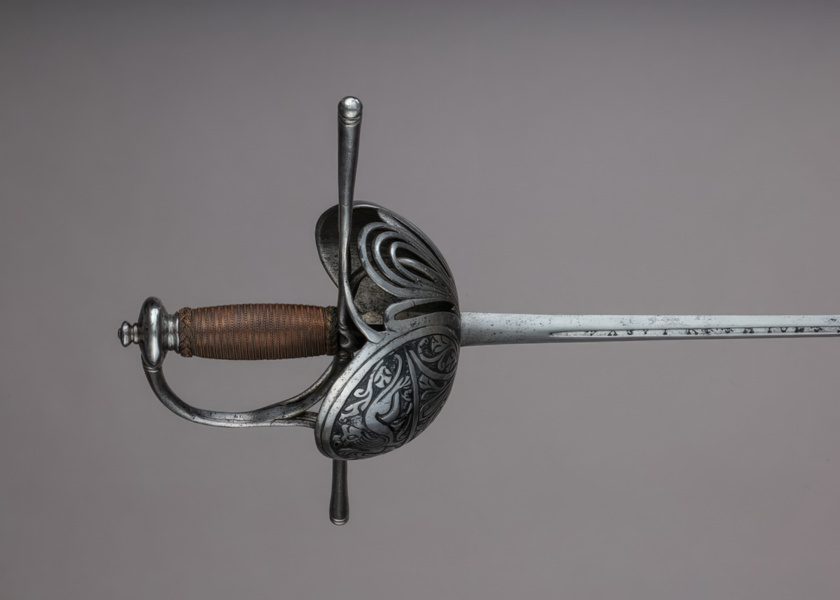
The Bilbo hilt has the similar design to the Spanish cup hilt, but instead of a cup-shaped guard, it features two large, curved shells that extend upward and backward over the ricasso, covering the arms of the hilt.
At the sides, a series of looped bars are elegantly crafted and intricately arranged. Many Bilbo hilts feature a ring guard positioned above each shell, which connects to the midpoint of the knuckle guard. The knuckle guard itself extends downward, merging with the outer arm of the hilt.
The name Bilbo likely originated in the 18th century, as large quantities of swords with this hilt style were exported from the port of Bilbao to the Spanish Americas and the Netherlands.
